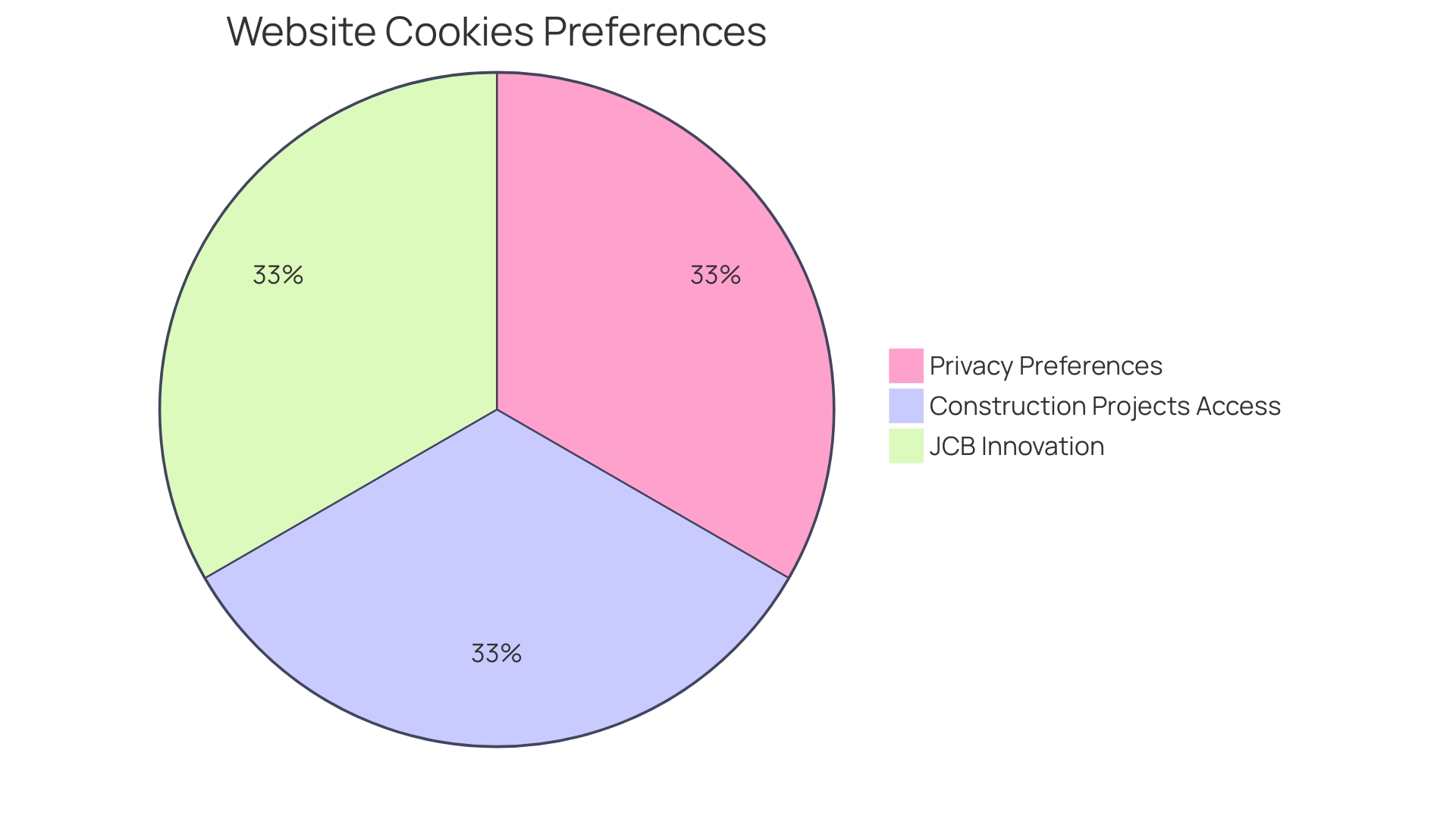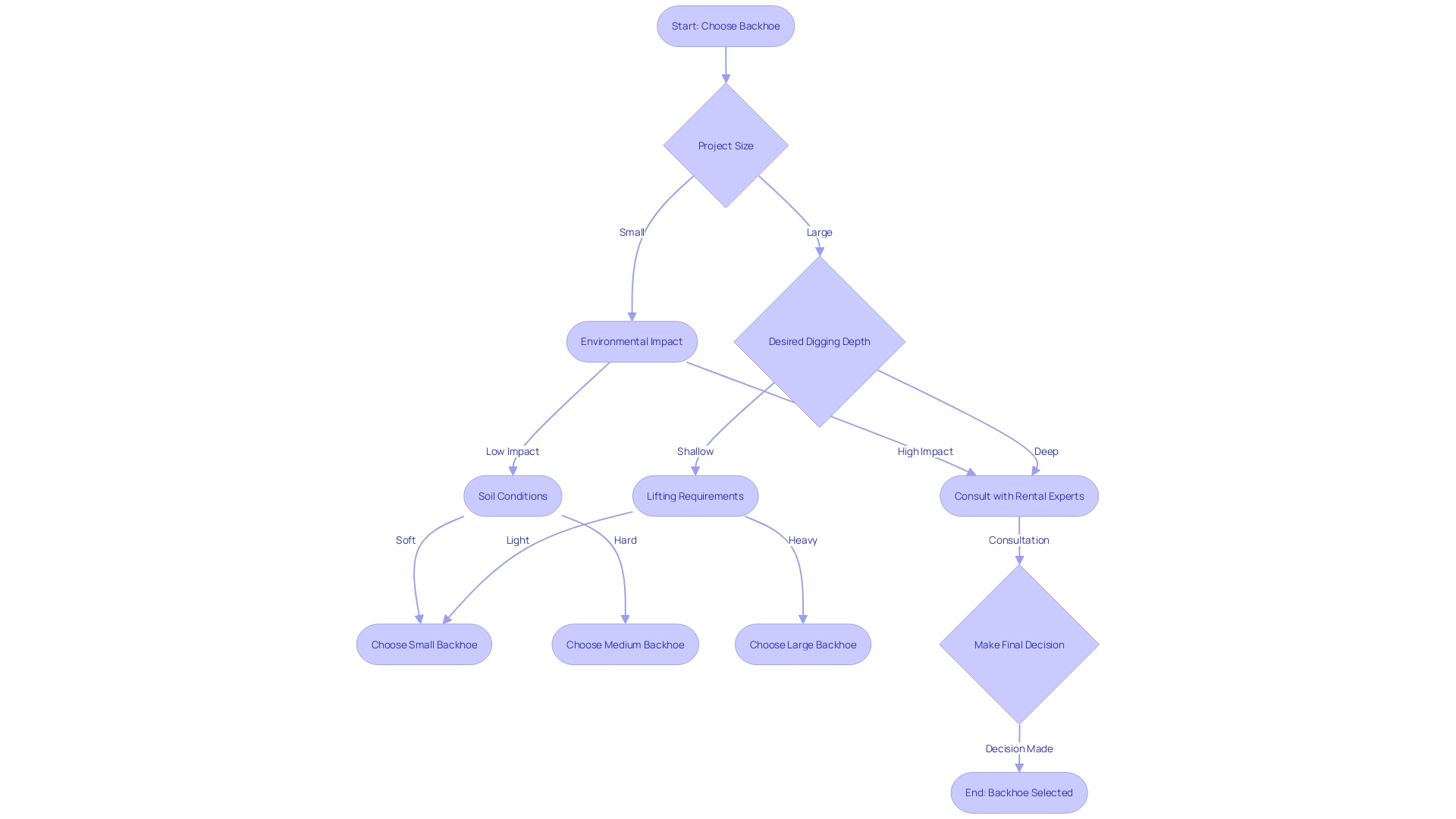Introduction
Backhoe loaders have become synonymous with efficiency and innovation in the construction industry. With companies like JCB leading the way in sustainability, the versatility and cost-efficiency of backhoe loaders have taken center stage. H&C Plant Hire's investment in a fleet of 20 JCB Backhoe Loaders further demonstrates the trust and value placed in these multifunctional machines.
From consolidating the functions of a tractor, a front-end loader, and a backhoe, to integrating advanced technologies and exploring alternative fuels, backhoe loaders offer solutions to the challenges faced by the industry. In this article, we will explore the key features for enhanced productivity, maintenance and cost-saving tips, the benefits of renting versus buying a backhoe, factors affecting backhoe rental costs, choosing the right backhoe for your project, safety and effective use of rented backhoes, and optimizing performance with backhoe attachments. Join us on this journey to discover how backhoe loaders can revolutionize the construction and agricultural machinery sector.
Versatility and Cost-Efficiency of Backhoe Loaders
Backhoe loaders are not just a staple in construction sites but a symbol of the industry's evolution towards efficiency and innovation. JCB, a company with over 75 years of innovation, exemplifies this evolution with its commitment to developing hydrogen combustion engines aimed at achieving net-zero carbon emissions for their machinery. This dedication to sustainability is echoed by H&C Plant Hire's significant investment in a fleet of 20 JCB Backhoe Loaders, underscoring the trust and value placed in backhoes' multifunctionality and environmental benefits.
The modern backhoe loader is a marvel of versatility, effectively consolidating the functions of a tractor, a front-end loader, and a backhoe. This multifaceted machine excels across various applications from construction to agriculture. The telescopic handler, a variant of the backhoe loader, further extends this versatility. It is capable of performing tasks traditionally requiring multiple machines—such as lifting heavy materials to considerable heights and maneuvering in tight spaces—thus saving time and reducing rental or purchase costs of additional equipment.
In addition to cost savings, companies like Freeport-McMoRan have recognized the safety and productivity enhancements brought by integrating advanced technologies like Cat MineStar Command into their fleet. The autonomous haulage system is set to revolutionize the Bagdad mine operations in Arizona, ensuring the safety of personnel, optimizing equipment use, and laying the groundwork for future electrification.
Kubota's decision to elevate their technology to meet higher standards further highlights the importance of reliability and integration with internal systems. Their collaboration with Desoutter exemplifies how the right technology can significantly reduce error rates and enhance the efficiency of workstations.
The journey toward sustainability in the construction and agricultural machinery sector is not just a goal but a continuous process of improvement. JCB's strides in fuel-efficient engine design and exploration of alternative fuels like HVO signify a proactive approach to responsible environmental stewardship while meeting the rigorous demands of the industry.

Key Features for Enhanced Productivity
Selecting the right backhoe for your construction project involves more than just a glance at the spec sheet. It's about understanding how certain features translate to job site efficiency and environmental responsibility. Modern backhoes, like those in JCB's fleet, showcase remarkable strides in fuel efficiency and emissions reduction. With a focus on continuous improvement, JCB's engines have evolved to meet the demands for greener operation, including the advent of hydrogen combustion engines aimed at achieving net-zero carbon emissions.
When evaluating backhoes, consider not only the horsepower, digging depth, reach, and lifting capacity but also the machine's compatibility with sustainable fuels like HVO. A backhoe's ability to work with alternative fuels can offer broader benefits, echoing industry trends towards more eco-friendly construction practices. For instance, H&C Plant Hire's investment in a fleet of 20 JCB Backhoe Loaders highlights the shift towards equipment that supports both productivity and sustainability.
Moreover, the integration of advanced technology such as that offered by Desoutter's tools, which feature flexible communication with internal IT systems, can significantly reduce error rates at assembly stations. This technological edge is essential for modern construction machinery, ensuring reliability, documentation, and seamless operation.
As construction criteria evolve, with points systems favoring electrically driven machines like Hamm's electric rollers, your choice in backhoe rental can also influence contract opportunities. Therefore, it's prudent to select a backhoe that not only meets the immediate performance criteria but is also aligned with the industry's trajectory towards sustainability and technological integration.
Maintenance and Cost-Saving Tips
Maintaining rented backhoes is not just about keeping the equipment running; it's a sound strategy to maximize uptime and financial performance. A survey by Sapio Research found that 92% of maintenance decision-makers reported an increase in equipment uptime, with 38% noting an improvement of at least a quarter. This is no small feat, as reliability not only boosts a business's reputation but is also critical in meeting contractual obligations and securing repeat business. In fact, three-quarters of respondents acknowledged that equipment reliability had a positive impact on their financial performance.
When it comes to backhoe maintenance, consider it akin to taking care of a rental property. Just as a tenant might renovate to maintain the value of the property they're leasing, contractors should conduct regular inspections and fluid checks on their backhoes, treating the equipment as if it were their own. Preventive maintenance is key to minimizing downtime and repair costs. By doing so, they ensure the backhoe operates at peak performance during the rental period, much like how Jungheinrich sets itself apart with after-sales service for forklifts, maintaining a stock of parts and having trained technicians ready to minimize downtime.
Rental costs can vary, but the price of not maintaining equipment can be much higher. For instance, the cost of renting a basic power tool might range from $30 to $50 a day, according to industry estimates. However, the cost of downtime due to poor maintenance can quickly surpass these expenses. The UK construction industry, despite facing economic challenges, is anticipated to grow by 15% over the next two years, according to Glenigan's forecast. This growth underscores the importance of reliable equipment and the avoidance of unnecessary delays in an increasingly competitive market.
In conclusion, effective maintenance of rented backhoes is an investment in productivity and profitability. It ensures that construction projects run smoothly, without the interruptions that can come from neglected equipment—a lesson that translates from the smallest tool to the largest backhoe.
Benefits of Renting vs. Buying a Backhoe
Opting to rent a backhoe can be a strategic decision for construction projects, offering significant advantages that align with the need for cost efficiency, flexibility, and access to cutting-edge equipment. Rental services, like those provided by the expansive network of Boels Rental Group, make it possible to utilize modern, high-quality machinery without the burden of ownership. This approach is particularly beneficial during times of financial uncertainty or when the project timeline is short, eliminating the hefty initial investment and ongoing maintenance expenses associated with purchasing a backhoe. Moreover, renting sidesteps the issue of equipment becoming outdated, allowing contractors to consistently leverage the latest technology.
The decision mirrors the considerations homeowners face when choosing between renting out their property for steady income or selling it for a lump sum—each choice carries its unique financial and practical implications. Similarly, project managers must evaluate the project scope, duration, and budget to determine if renting aligns with their goals. For instance, telescopic handlers have proven their worth by performing multiple functions with one machine, illustrating how versatile equipment can significantly cut costs and improve efficiency on-site. With over 90% of the European Investment Bank's operations focusing on sustainable investment, the trend towards renting reflects a broader shift towards more financially and environmentally responsible practices in the construction industry.

Factors Affecting Backhoe Rental Costs
Factors influencing the cost of backhoe rentals are multifaceted and vital for contractors to consider when budgeting for their projects. The rental duration is a primary determinant; longer periods typically mean lower daily rates but higher overall costs. The backhoe model and size also significantly impact the price. Advanced models with higher capacities and features command premium rates, reflecting their increased efficiency and capabilities. Location plays a crucial role as well; rental costs can vary widely depending on the local market and availability. Additionally, specific attachments or accessories that enhance the backhoe's functionality can incur extra fees. For instance, renting a backhoe with a hydraulic hammer or auger attachment will be more expensive than a standard backhoe. A comprehensive understanding of these elements allows contractors to make informed decisions, optimizing their financial resources while fulfilling project requirements.
Choosing the Right Backhoe for Your Project
Choosing the correct backhoe for your project isn't just about getting the job done. It's about efficiency, sustainability, and innovation. When selecting a backhoe, consider the environmental impact—opt for models with fuel-efficient engines or those compatible with renewable fuels like HVO to reduce emissions. Think beyond traditional capabilities; modern backhoes, like the fleet of 20 JCB Backhoe Loaders recently invested in by H&C Plant Hire, offer advancements such as hydrogen combustion engines, aiming for net-zero carbon emissions.
Project size and scope are fundamental, but also assess soil conditions, desired digging depth, and lifting requirements. For instance, telescopic handlers have revolutionized on-site productivity, capable of lifting to heights and reaching into spaces that traditional equipment cannot. They are a testament to how one versatile machine, like those from JCB's 75-year legacy of innovation, can replace multiple pieces of equipment, saving you time and money.
Consultation with rental experts is imperative—they provide insights and share experiences, such as Mapei's comprehensive technical documentation, which is crucial to overcoming site challenges. By considering these factors, you ensure that the backhoe you choose not only meets your project's needs but also contributes to a more sustainable and efficient construction industry.

Safety and Effective Use of Rented Backhoes
When it comes to renting backhoes, the emphasis on safety cannot be overstated. Key safety measures include comprehensive operator training and regular pre-operation inspections, which play a critical role in preventing accidents and ensuring a secure work environment. Mastery in safe maneuvering techniques and diligent use of personal protective equipment are fundamental to operate these powerful machines responsibly.
Innovative companies like JCB are leading the charge in enhancing safety and efficiency by focusing on sustainability and fuel-efficient engines, with a vision to transition to hydrogen combustion engines for carbon-neutral construction machinery. This commitment to safety and innovation resonates with the broader industry's focus on minimizing risk while maximizing performance.
Recent trends in tool-sharing and tool libraries have made access to professional-grade equipment like backhoes more affordable and community-oriented. With rental costs ranging approximately from $30 to $50 per day, contractors can utilize high-quality machinery without compromising on safety or breaking the bank.
The importance of safety in industrial operations is illustrated by the handling of heavy-duty equipment where a lapse in safety protocols can lead to severe consequences. As highlighted by industry professionals, the absence of proper training and certification is one of the most significant oversights in equipment management. Ensuring that operators are well-versed in safety protocols is not just about compliance, but about fostering a culture of safety that extends beyond the worksite.
Additionally, the reality of the risks associated with construction work is underscored by statistics from the U.S. Bureau of Labor Statistics, which reveal that certain professions, including those involving heavy machinery, have a fatality rate significantly higher than the national average across all professions. This underlines the essential nature of rigorous safety practices in the operation of rented backhoes and other construction equipment.
As the industry evolves, the scarcity of fire safety equipment, as reported in recent news, further emphasizes the need for preparedness and adherence to safety standards. With the right approach to safety and the utilization of sustainable, efficient machinery, contractors can ensure the well-being of their teams and the successful completion of projects.
Optimizing Performance with Backhoe Attachments
Enhancing the functionality of rented backhoes with the right attachments can be a game-changer for contractors. Different projects require unique tools, and with attachments like buckets, hydraulic breakers, augers, and grapples, a backhoe's versatility is significantly expanded. Each attachment serves a specific purpose: buckets for digging and material handling, breakers for demolishing concrete, augers for drilling holes, and grapples for grasping materials. JCB, with its 75-year history of innovation, is now focusing on net-zero carbon emissions machinery, indicating a trend towards more sustainable construction practices. Similarly, H&C Plant Hire's investment in a new fleet of JCB backhoes demonstrates the industry's commitment to modernizing equipment.
Advanced technology in attachments is not just about physical capabilities; it's also about seamless integration with existing systems. Manufacturers like Desoutter stand out by providing tools that communicate effectively with internal IT systems, reducing error rates and enhancing efficiency at the workstations. With the construction industry moving towards eco-friendly solutions, like Hamm's electric rollers considered in tender evaluations through point systems, and Firstgreen Industries' remotely operated electric skid steer, attachments must also align with these sustainability goals.
In terms of benefits, telescopic handlers exemplify the shift towards multifunctional machines that save time and money by performing multiple roles traditionally handled by separate equipment. Their adaptability in lifting, reaching, and transporting across terrains enhances productivity and accelerates project timelines. These developments underscore the importance of choosing attachments that not only meet project requirements but also contribute to a safer, more efficient, and environmentally responsible construction environment.
Conclusion
Backhoe loaders are essential for the construction industry, offering efficiency and innovation. Companies like JCB and H&C Plant Hire trust and value these multifunctional machines. Key features like fuel efficiency, compatibility with sustainable fuels, and advanced technology contribute to enhanced productivity.
Effective maintenance of rented backhoes is crucial for productivity and profitability. Regular inspections and preventive maintenance minimize downtime and repair costs, ensuring smooth construction projects. Renting backhoes provides cost efficiency, flexibility, and access to cutting-edge equipment.
Factors like rental duration, backhoe model, location, and attachments affect rental costs. Contractors should consider these elements when budgeting, optimizing financial resources while meeting project requirements.
Choosing the right backhoe involves considering environmental impact, project size, soil conditions, and lifting requirements. Fuel-efficient and renewable fuel-compatible backhoes contribute to a sustainable construction industry. Safety is paramount, with comprehensive operator training and regular inspections ensuring a secure work environment.
Enhancing backhoe functionality with attachments expands versatility and promotes safety and environmental responsibility. Contractors can revolutionize the construction industry by considering key features, maintenance tips, rental benefits, cost factors, backhoe selection, safety measures, and attachment optimization.
In conclusion, backhoe loaders offer innovative solutions to construction challenges. With proper maintenance, renting benefits, cost considerations, environmental consciousness, safety measures, and attachment optimization, contractors can revolutionize the construction industry. Backhoe loaders are the key to efficiency, productivity, and a sustainable future.




